We are thrilled to announce that we have partnered with Universal Electronics to launch the QuickSet Cloud Predictive Discovery API on RapidAPI. The QuickSet Cloud API utilizes the largest knowledge graph of devices to uniquely identify a device and its associated attributes such as device type, brand, model, etc. Identification can be done using a device’s unique fingerprint such as MAC, mDNS, and SSDP.
Getting Started with QuickSet Cloud API
The first step in the process is to navigate to the QuickSet Cloud API listing. This can be done by searching for “QuickSet Cloud” on the RapidAPI homepage or by navigating to the listing directly: https://rapidapi.com/universalelectronics/api/quickset-cloud
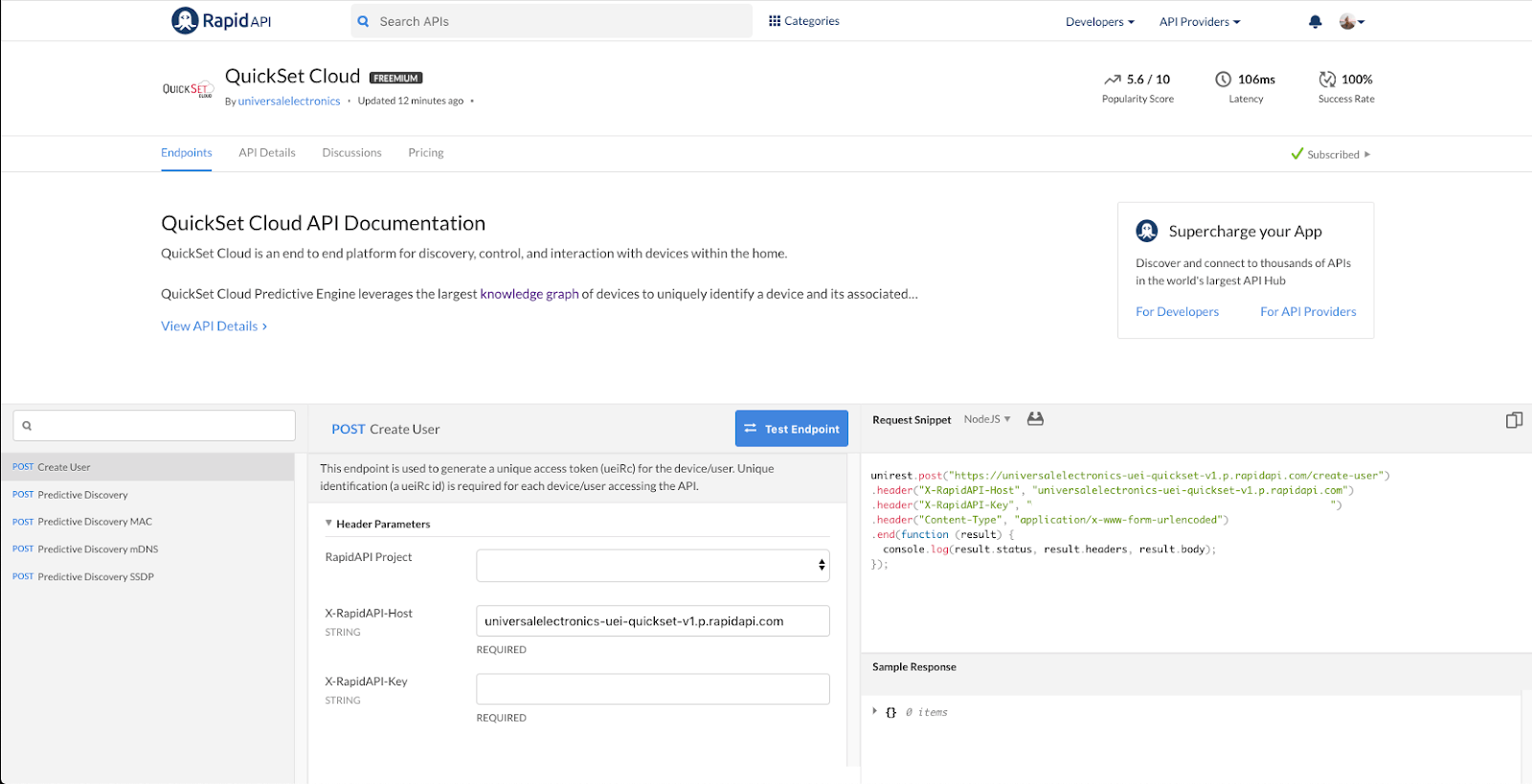
Upon landing on the API page you will find the Endpoints section. This page provides you with a ton of information about the API such as a short description, available endpoints, code snippets, API metrics, and more!
Before you are able to make a request to the API, you first need to subscribe to a pricing plan. To do this, navigate to the ‘Pricing’ tab.
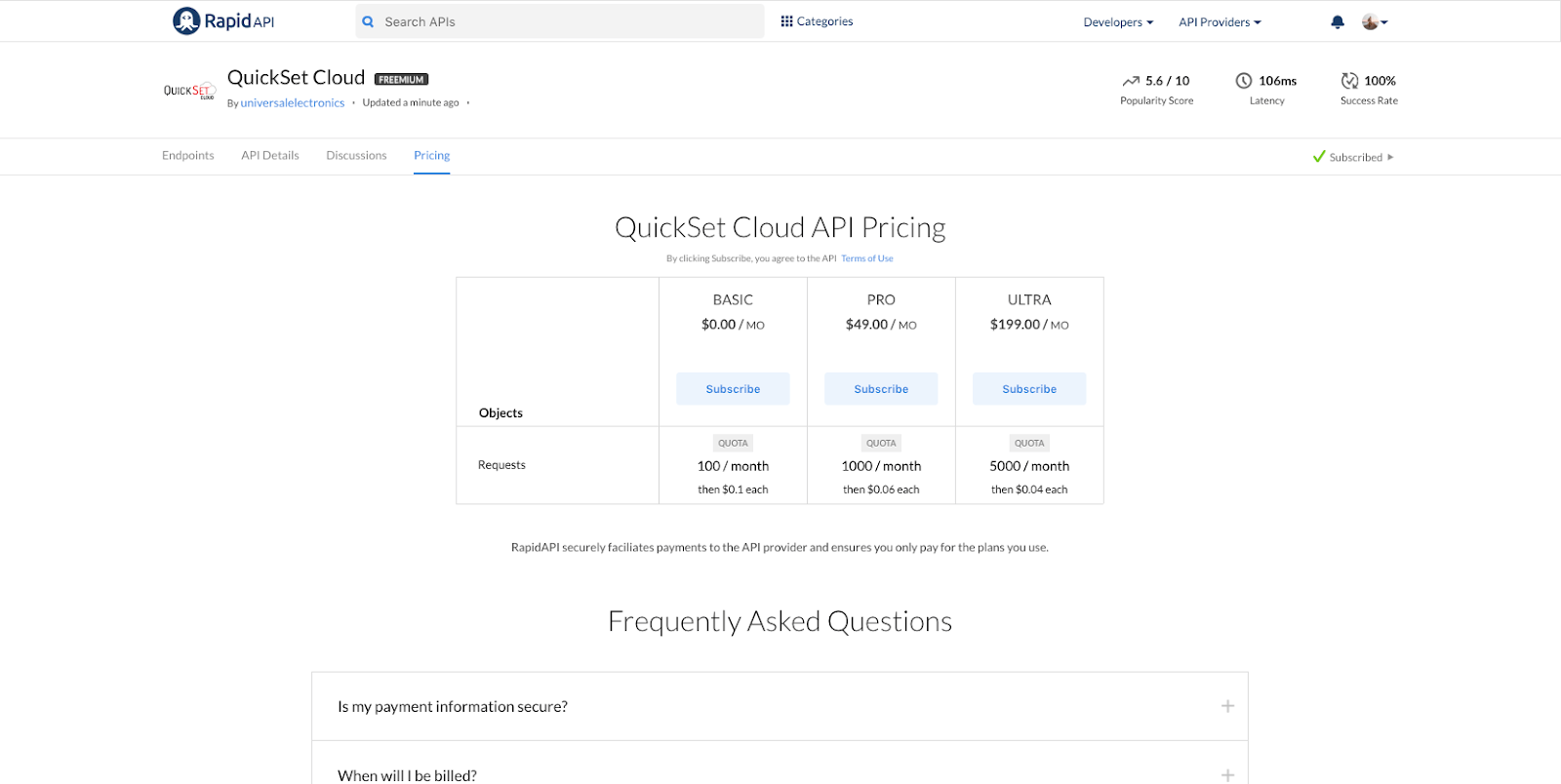
QuickSet Cloud has three different pricing plans available: A free BASIC plan to help you get started with the API and make test requests to ensure the API is a good fit for your application. A $49 PRO plan that increases your monthly request limit a bit more, but still has an overage price of $0.06 for any additional requests made over the allowed 1000 requests per month. Then finally, a $199 ULTRA plan, which is for apps that are fully functional and making a large number of requests. Notice that as the base price of the plan increases, the cost for each additional request over the monthly limit decreases.
Once you are subscribed to a pricing plan, the next step would be viewing the ‘API Details’ page.
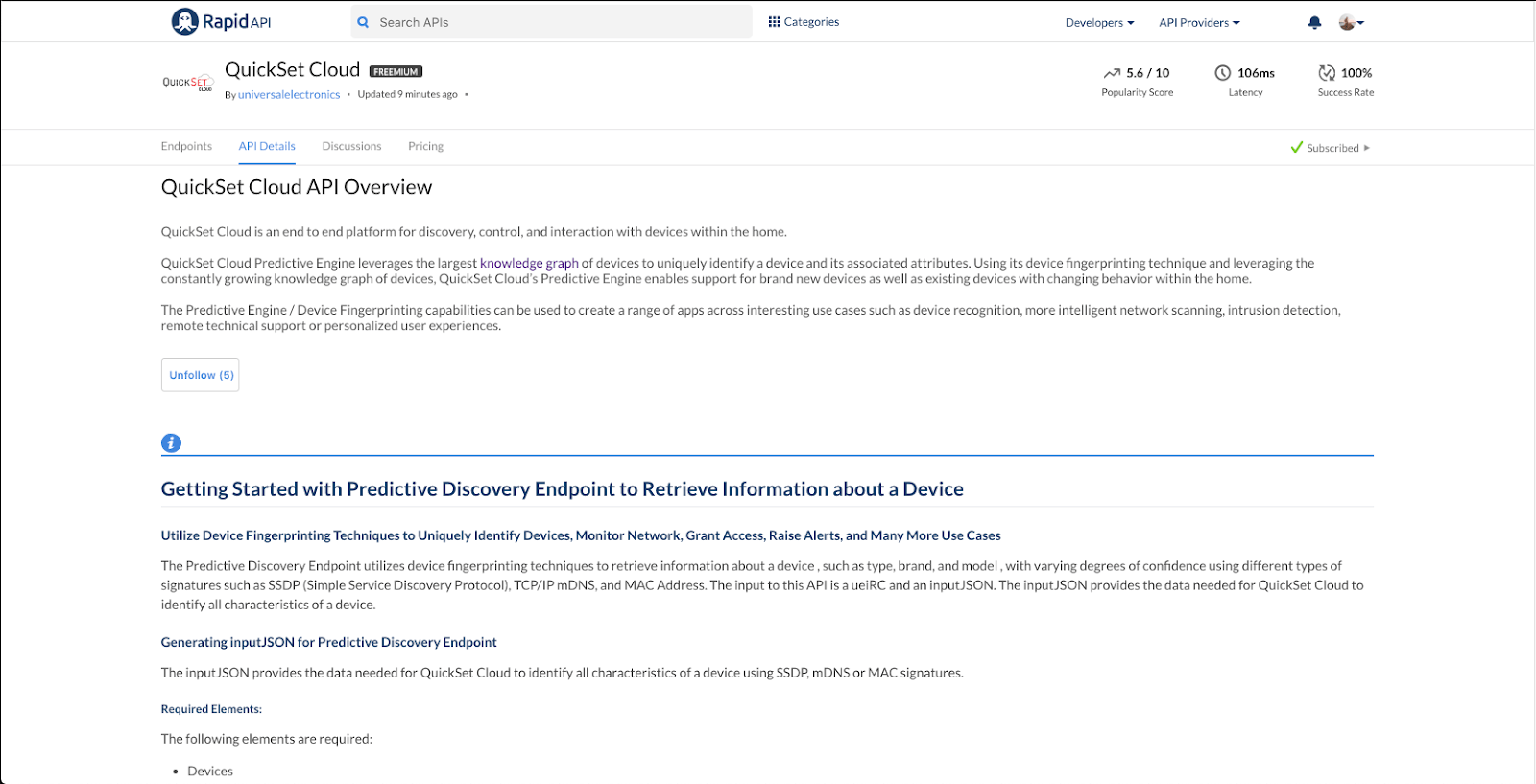
The API Details page provides you with a wealth of information on how to generate the input JSON for the Predictive discovery endpoint. This page also provides information on what optional elements can be passed to the API to refine the predicted results, as well as the status codes that the API might return.
After the API Details page, you can navigate back to the Endpoints page to get started with making requests.
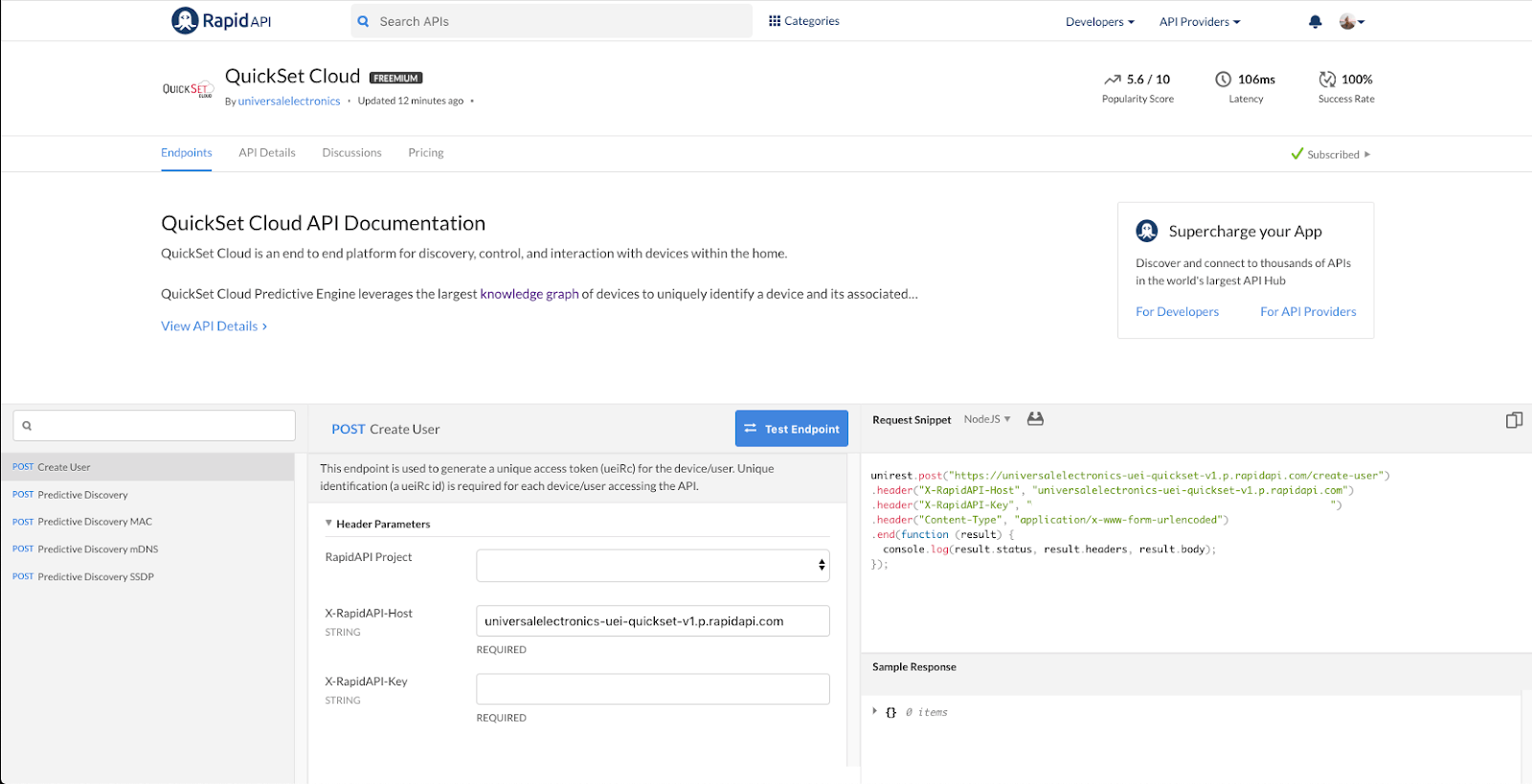
Now that you’re subscribed to a pricing plan and learned about how the API works, it’s time to begin making requests.
With the QuickSet Cloud API, you always need to call the Create User endpoint before making other requests. The Create User endpoint returns a ‘ueirc’, which is a required parameter for the rest of the available endpoints.
After obtaining a ueirc, select any of the predictive discovery endpoints to identify a device’s attributes. The general ‘Predictive Discovery’ endpoint provides you with the most control and customization around the parameters you provide, as well as the ability to refine the predicted results. For this endpoint, you will need to create an inputJSON. Information on how to do this can be found in the API Details page.
The other three endpoints, ‘Predictive Discovery MAC’, ‘Predictive Discovery mDNS’, and ‘Predictive Discovery SSDP’, are all simplified versions of the general Predictive Discovery endpoint. With these endpoints, you can simply supply a single device signature to identify a device without being required to create an inputJSON.
One benefit of connecting to the API via RapidAPI is the ability to make requests to the API directly in the browser. This allows you to test the API with your own input parameters without having to get an application up and running. To test in-browser, change the required and optional input parameters on the page and press the ‘Test Endpoint’ button.
If the response of the API is what you need for your application, RapidAPI provides you with code snippets in all of your favorite programming languages to help you get up and running as quickly as possible. All you have to do is copy and paste the code snippet into your application to get started!
Use Cases
The Predictive Discovery API can be used to create a range of apps across interesting use cases. Some possible use cases could be device recognition, more intelligent network scanning, intrusion detection, remote technical support, personalized user experiences, and many more.
Conclusion
We are extremely excited to offer QuickSet Cloud API on RapidAPI and we can’t wait to see what you build with it! Let us know what you build by either commenting below or emailing community@rapidapi.com. We’re always looking for interesting projects from our developer community to highlight.
Good Luck!
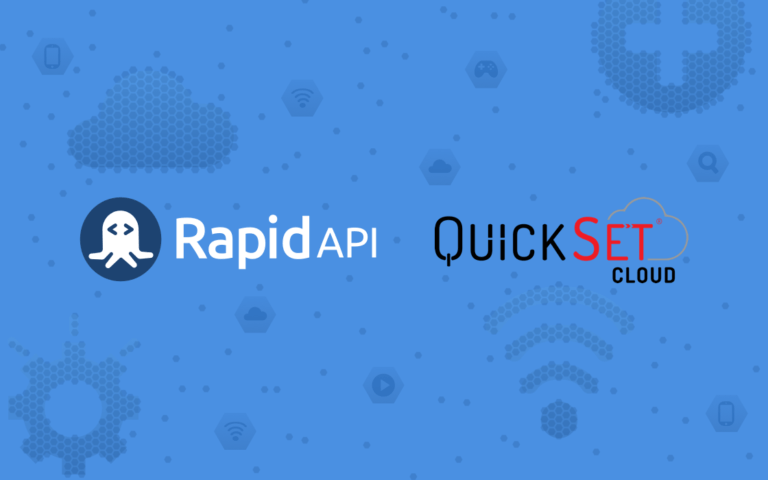
Leave a Reply